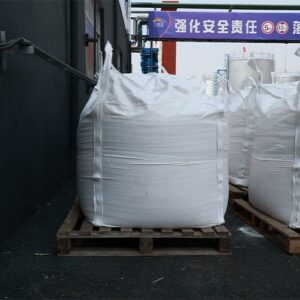Introduction
In the realm of chemical processes, sodium formate stands as a remarkable compound with multifaceted applications. This versatile substance finds its utility across various industries, from leather production to oil drilling. Understanding the intricacies of sodium formate and its role in chemical reactions unveils its significance in modern industrial processes.
Sodium Formate: A Brief Overview

What is Sodium Formate?
Sodium formate (HCOONa) is a sodium salt derived from formic acid (HCOOH) – a simple, yet pivotal, carboxylic acid. It appears as a white, crystalline powder and is highly soluble in water. This compound’s unique chemical structure forms the basis for its broad range of applications.
Synthesis of Sodium Formate
Sodium formate is primarily synthesized through the neutralization of formic acid with sodium hydroxide. This process results in the formation of sodium formate and water as byproducts. The reaction can be represented as follows:
HCOOH + NaOH → HCOONa + H2O
The Role of Sodium Formate in Chemical Processes
**1. Preservation of Leather
Sodium formate plays a crucial role in the leather industry, where it is utilized as a tanning agent. During leather processing, it aids in preventing decomposition and preserves the quality of the material. Its ability to inhibit microbial growth makes it an effective option for preserving leather goods.
**2. Deicing Agent
In cold climates, sodium formate finds application as a deicing agent. Its low environmental impact, coupled with its capability to lower the freezing point of water, makes it an efficient choice for deicing roads and runways. Its granular form allows for easy spreading and effective ice melting.
**3. Oil Drilling Fluid Additive
The oil and gas industry benefits from sodium formate’s unique properties as an additive in drilling fluids. It assists in controlling the rheological properties of drilling mud, thus improving wellbore stability and minimizing the chances of formation damage. This aids in smoother drilling operations.
**4. Reductive Agent
Sodium formate serves as a reductive agent in various chemical reactions. Its ability to release hydrogen gas when heated makes it suitable for reducing agents in processes such as catalytic hydrogenation of organic compounds.
**5. Paper and Pulp Industry
In the paper and pulp industry, sodium formate functions as a stabilizer and buffer in bleaching processes. It aids in maintaining the pH level of solutions, ensuring optimal conditions for chemical reactions that enhance the quality of paper products.
Complexity and Burstiness in Sodium Formate’s Applications
The complexity of sodium formate’s applications arises from its diverse roles across industries. From its role as a tanning agent in leather preservation to its use as a reductive agent in intricate chemical reactions, sodium formate adapts to varied processes, showcasing its versatility.
The burstiness of sodium formate’s impact is evident in its sudden and significant effects in specific contexts. For instance, the rapid deicing of icy surfaces and the efficient stabilization of drilling fluids demonstrate how sodium formate’s properties can swiftly address challenges in distinct scenarios.
FAQ about Sodium Formate
Q1: Is sodium formate toxic?
A1: Sodium formate is considered relatively safe when handled properly. However, like any chemical substance, it should be used with caution. Protective measures, such as wearing appropriate personal protective equipment, are recommended when working with sodium formate.
Q2: Can sodium formate be used in food preservation?
A2: Sodium formate is not commonly used in food preservation due to its limited solubility and potential interactions with other food components. Other food-safe preservatives are preferred for this purpose.
Q3: How does sodium formate contribute to environmental sustainability?
A3: Sodium formate’s low environmental impact and biodegradability make it a preferred choice in certain applications, such as deicing agents. Its use can help reduce the ecological footprint of chemical processes.
Q4: Can sodium formate be used in pharmaceutical applications?
A4: Sodium formate’s applications in the pharmaceutical industry are limited. It is primarily utilized in chemical reactions and industrial processes rather than pharmaceutical formulations.
Conclusion
Sodium formate’s role in chemical processes is marked by its adaptability, complexity, and burstiness. From leather preservation to oil drilling, its diverse applications underscore its significance across industries. As industries continue to innovate, sodium formate’s versatile properties are likely to find new and creative applications, further highlighting its importance in modern chemical processes.



